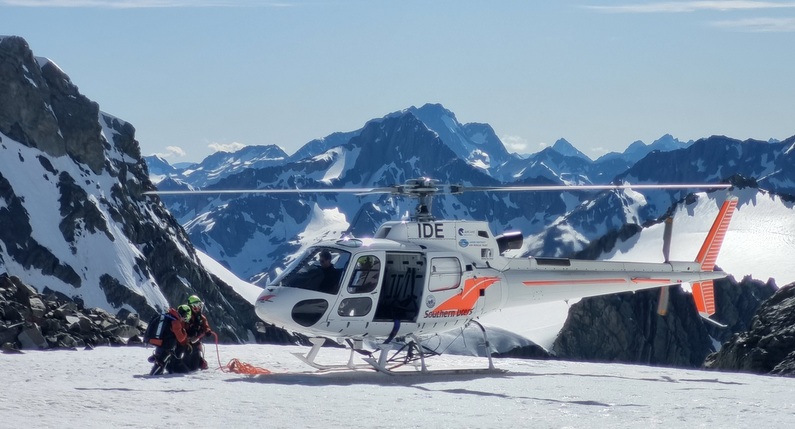
Department of Conservation Search and Rescue
Providing full-time alpine SAR capability in the central Southern Alps.
Based at Aoraki / Mt Cook Village, a team of up to seven Department of Conservation staff provide alpine rescue capability for the high terrain between Arthur’s Pass and Haast Pass. Although Police and the NZSAR Council contribute funding for the capability, the bulk comes from the Department of Conservation. This provides for four full-time staff, supplemented by three fixed term staff over the October to February peak visitor season.
“Staff members generally remain in the team around three to five years and have the opportunity to focus solely on alpine rescue at work,” says George Loomes, Supervisor Search and Rescue at Aoraki / Mt Cook. “At the end of their tenure, full-time team members often move on to other paid or voluntary roles within the sector. Having that depth of experience continually being spread across the country provides a significant ongoing benefit. This adds even more return on the investment in the team’s capability.”
Complementing the on-mountain team are trained local Department staff who perform the Incident Management Team (IMT) roles. “Usually, we have two local staff at the IMT, supporting a remote Incident Controller from Timaru Police, or the Maritime NZ Rescue Coordination Centre,” says George. “If incidents grow, we can bring in other Department staff and volunteers from Mackenzie Land Search and Rescue.”
In recent years, the team averages 40 to 50 operations a year. Deployments peak around the optimum mountaineering season in November, however changing visitor patterns mean operations are becoming more evenly spread than in the past. “We’re getting lots of ski touring groups in the winter,” says George. “The scarcity of booking spaces in Great Walk huts means that more pressure has come on other hut facilities. We’re seeing tourists regularly going up to Mueller Hut right through until June.”
A deployment usually begins with a thorough briefing at the village SAR base. Next, two to three rescuers deploy in a helicopter to conduct a reconnaissance of the scene, the weather and conditions before determining the best course of action. Usually the helicopter lands at a safe forward point nearby, to be reconfigured for the job. “Perhaps we’ll rig up the Human External Cargo (HEC) long-line to be flown to a tricky spot,” says George. “Or maybe the helicopter will get us as close as possible and we climb or ski the last bit.” If there are serious enough injuries, the team might fly towards a hospital and conduct a patient transfer with an emergency medical services helicopter along the way.
The team works with The Helicopter Line, operating ‘Squirrel’ Helicopters and long-lines, as well as GCH Aviation and Helicopters Otago who operate the larger BK-117 / EC145 machines with night vision goggles and a rescue hoist. “We work with the coordinating authorities and helicopter operators to make the best choice of machine for each situation,” says George.
Outside of operations, the team has a busy schedule. Technical training includes rope rescue, helicopter deployment and medical skills. Operational procedures, safety management systems and budgets are regularly reviewed and refined. Members are generally New Zealand Mountain Guides Association-qualified guides and maintain currency through regular climbing and skiing training in the local region.
Team members frequently travel around the country, to deliver training to volunteer Alpine Cliff Rescue teams, as well as collaborating on best practice and standardisation of techniques and equipment. Recently, the team organised and led the Alpine SAR training day at the Southern Hemisphere Alpine Conference in Wānaka.
Feature image: Department of Conservation Search and Rescue team during a SAR operation. Supplied
Enjoy this story?
Sign up to our Link Newsletter to receive stories like this plus NZSAR news and announcements direct to your inbox, every six weeks.
Follow NZSAR on LinkedIn for more SAR news, announcements and discussion.
This story was originally published in the September 2024 issue of Link magazine, which is produced by the NZSAR Secretariat for the wider search and rescue sector.
